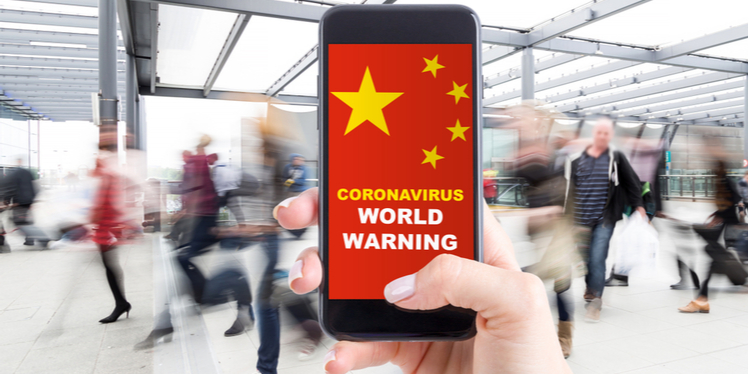Coronavirus: A Lesson in Supply Chain Risk
Ensure sourcing and manufacturing optionality
The first ripple effects of coronavirus are already being felt across supply chains which have become overly-reliant on Chinese suppliers and manufacturing facilities:
- General Motors, Toyota, and Volkswagen have all temporarily closed their Chinese facilities
- Hyundai shut seven car factories in South Korea (40 percent of its global output) after running out of Chinese components
- The outbreak may reduce vehicle output by more than 1.7 million cars because of plant closings, according to IHS Markit
- BP warned of a potential 40 percent fall in oil demand caused by the outbreak
The coronavirus outbreak in China has served as a sobering reminder of the vulnerability of today‘s hyperconnected global supply chains and of the importance of contingency planning to protect resilience. Planning for short, mid and long-term disruptions is critical, yet while executives are aware of at least some of the most prevalent supply chain risk factors, many do not have robust contingency plans in place to protect their business if the unexpected happens. As a result, the outbreak has caught many businesses off guard with its continuing unpredictability adding new urgency to the need to know sooner and act faster.
Already impacted by the effects of the tariff war, a recent survey reported that approximately 40 percent of executives don‘t have an effective supply chain risk management program in place. That means when the unexpected happens, as it frequently does, they face the risk of not having the supply chain sourcing optionality or manufacturing footprint capacity needed to protect margins and growth. The result? Disruption and restrictions in the supply chain which lead to shutdowns and loss of margin. To counteract this, supply chain leaders urgently need to assess and plan for how the virus will impact them and quickly take measures to protect resilience.
When the unexpected happens, as it frequently does, executives face the risk of not having the supply chain sourcing optionality or manufacturing footprint capacity needed to protect margins and growth.“ Simon Knowles, CMO, Maine Pointe

As David Smith, economics editor for the Times said, “some have taken to quoting a 2013 World Bank study that estimated a global pandemic could reduce world gross domestic product by as much as five per cent, a big shock. That, however, was the potential impact of a pandemic on the scale of the 1918-19 Spanish flu outbreak, which killed 50 million. Optimists would say that the impact on global growth will be barely detectable, perhaps 0.1 percentage points, while pessimists would say 0.5 points. However, a reasonable middle ground would be that coronavirus could knock 0.2 or 0.3 points off a global growth rate that was expected by the International Monetary Fund to recover from 2.9 per cent in 2019 to 3.3 percent this year.“
A lack of preparedness isn‘t limited to completely unpredictable factors such as disease and natural and manmade disasters. For example, while the majority of businesses agree that recession is likely to occur in the near to medium term, less than ten percent consider themselves well prepared. This inaction may come back to bite them hard in the near future given that any pressure on China‘s growth will hit global economies hard.
If they don‘t already have visibility of your end-to-end supply chain, executives need to assess and plan for how the virus and other risks could impact them and quickly take measures to protect resilience. The bottom line is, if you‘re one of the ~40 percent of companies who do not have an effective supply chain risk management program in place, it would be wise to review your sourcing and manufacturing optionality.
The short-term uncertainties are mainly related to global risks -- trade, geopolitical and now the outbreak of the coronavirus and its potential effect on global growth.“ Christine Lagarde President European Central Bank
Anticipate, prepare for, and respond to risk
Having an end-to-end supply chain risk assessment and management program is critical to growth, profitability and customer service. Optimizing your supply chain from a risk, cost, cash, quality and growth perspective will help secure supplier relationships, prevent supply bottlenecks and ensure your company is operating both legally and ethically. Taking a Total Value Optimization (TVO)™ approach to risk management and integrated supply chain optimization helps business leaders increase visibility and implement accelerated measurable improvements across the global supply chain. It enables executives to quantify EBITDA improvements, together with operational and working capital risks and opportunities, then develop a documented implementation road map for improvement.
There is still a chance to mitigate against the risks your supply chain is facing today. Don‘t wait for the next storm to hit. If you would like to discuss any points raised in this article, contact the authors:
Simon Knowles, Chief Marketing Officer, Maine Pointe: sknowles@mainepointe.com
Neil Willings, Head of Supplier Risk, SGS: neil.willings@sgs.com
About Maine Pointe
Maine Pointe, a member of the SGS Group, is a global supply chain and operations consulting firm trusted by many chief executives and private equity firms to drive compelling economic returns for their companies. We achieve this by delivering accelerated, sustainable improvements in EBITDA, cash and growth across their procurement, logistics, operations and data analytics. Our hands-on implementation experts work with executives and their teams to rapidly break through functional silos and transform the buy-make-move-fulfill digital supply chain to deliver the greatest value to customers and stakeholders at the lowest cost to business. We call this Total Value Optimization (TVO)™.
Maine Pointe‘s engagements are results-driven and deliver between 4:1-8:1 ROI. We are so confident in our work and our processes that we provide a unique 100% guarantee of engagement fees based on annualized savings. www.mainepointe.com
